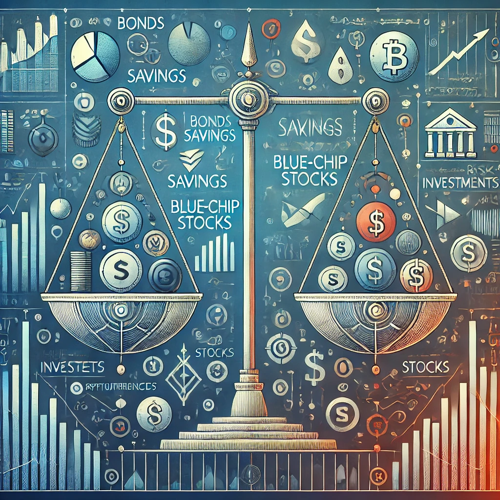What are Differences Between Crypto and Forex? What is Forex? Popular Cryptocurrencies and Currency Pairs. Forex Education and Training.
Differences Between Crypto and Forex
The cryptocurrency ecosystem has become extremely popular, especially in the last 5 years, and with the recent rise in interest, the total value of the cryptocurrency market has exceeded $3 trillion. However, we often compare the cryptocurrency market to the Forex market. So what is Forex? How is it different from cryptocurrency?
What is Forex?
Forex (Foreign Exchange) is the largest and most liquid financial market where different currencies are traded around the world. The Forex market regulates international currency trading and its daily trading volume reaches trillions of dollars. The market is open 24 hours a day from Monday morning to Friday evening, allowing traders to trade in different time zones.
Currency pairs traded on the Forex market are pairs where two different currencies are traded together. For example, the Euro to the US Dollar (EUR/USD) or the Japanese Yen to the British Pound (JPY/GBP). Traders aim to profit from changes in the value of currency pairs. If you think the value of one currency will rise against another, you can buy it and sell the other currency; if it falls, you can trade the opposite.
The high liquidity of the market allows large transactions to be carried out quickly and at low cost. Forex is used for both speculation and hedging. This market, which allows the use of leverage, offers traders the opportunity to open large positions with a small margin, but this also increases risk.
Trading in the Forex market requires market analysis, technical analysis and fundamental analysis. Traders aim to make profits by taking advantage of changes in exchange rates, while trying to limit potential losses by applying effective risk management strategies.
What are the Differences Between Forex and Crypto?
Cryptocurrency and Forex trading have both similarities and differences. Cryptocurrency trading refers to the buying and selling of digital assets such as cryptocurrencies, tokens and NFTs. Forex trading refers to the exchange of one fiat currency for another in the hope that one currency will increase in value. The mechanisms that drive the valuation of cryptocurrencies and fiat currencies are similar, such as supply and demand.
However, the specific forces behind the supply and demand for cryptocurrencies and foreign exchange are very different. The forces behind the supply and demand for foreign exchange are enormous, and any serious imbalance can have a huge impact on the global economy. On the other hand, the basic mechanisms used to analyse price charts when doing technical analysis are the same in cryptocurrency and forex trading. However, there is one major difference: The volatility of the cryptocurrency market is much higher than that of the forex market.
Differences Between Forex and Cryptocurrencies
If we clearly examine the difference between forex and crypto, they are two popular financial markets that offer different opportunities to investors. However, both markets have their own characteristics and differences. Here are the main differences between forex and cryptocurrencies:
1. Number of Available Instruments
Forex: In the forex market, large and liquid currency pairs are usually traded. The number of currency pairs that can be traded in this market is limited and usually consists of major and minor currency pairs. The Forex market can sometimes experience periods of calm trading for days or even weeks, which can limit traders’ trading opportunities.
Cryptocurrencies: Cryptocurrency markets offer a much wider range of instruments. In addition to the leading cryptocurrencies such as Bitcoin, Ethereum and Ripple, there are hundreds of different altcoins and tokens. This diversity offers investors a wide range of transactions, but also requires careful analysis and risk management.
2. Liquidity
Forex: The Forex market is the financial market with the highest liquidity worldwide. Currency pairs allow trading to be carried out quickly and at low costs thanks to large trading volumes. High liquidity makes it easy to trade large volumes in the market.
Cryptocurrencies: The liquidity of cryptocurrency markets is generally lower compared to the forex market. In particular, lesser-known or newer cryptocurrencies may have lower liquidity due to low trading volumes. This can affect price volatility when trading and increase transaction costs.
3. Volatility
Forex: Volatility in the Forex market generally remains at lower levels. Major currency pairs usually move more stably and price changes can be more predictable. This provides a more stable environment when implementing risk management strategies.
Cryptocurrencies: The cryptocurrency market is an extremely volatile market. Prices of cryptocurrencies can fluctuate widely depending on news feeds, market speculation and other factors. This high volatility can offer investors high earning opportunities, but it can also carry great risks.
4. Profit Potential
Forex: In the Forex market, profit potential can often be achieved consistently, but usually at lower rates. Traders often use high trading volumes to profit from small price movements.
Cryptocurrencies: The profit potential in cryptocurrencies can be much higher than in the forex market. The rapid price movements of cryptocurrencies can make it possible to make large profits in a short period of time. However, this high profit potential comes with high risk and requires careful analysis.
5. Trading Hours
Forex: Forex markets operate according to specific trading hours. The market is open five days a week and trading hours vary according to the opening and closing times of the world’s financial centres. This allows traders to trade at specific times.
Cryptocurrencies: Cryptocurrency markets are open 24 hours a day, 7 days a week. This continuous trading process gives traders flexibility and the ability to follow market movements at all times.
© 2024 BestForexHub, All Rights Reserved.


